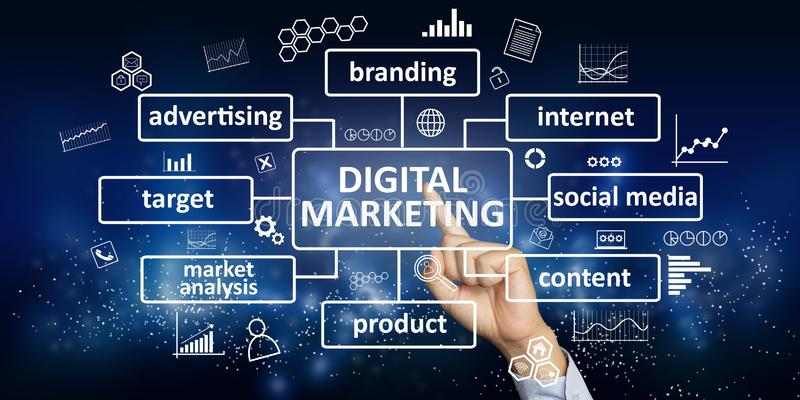SME Digital Marketing Strategies: 8 Essential Elements to Create a Fantastic Strategy
A high-level approach to digital marketing would be to use digital channels such as search engines, websites, social media, email, and mobile apps to deliver advertising. Companies endorse goods, services, and brands through digital marketing, which makes use of these online media channels. For product research, consumers rely heavily on digital means. Google marketing insights revealed that 48% of consumers begin their searches on search engines, 33% start at brand sites, and 26% use mobile apps.
Small and Medium Scale businesses have become the Holy Grail for business marketers. In the United States, small businesses are now responsible for 50 percent of the gross national product, according to the U.S Small Business Administration, and this segment is growing at 11 percent annually, three percentage points higher than the growth of large companies.
There is a lot more to online advertising than the channels alone. The true potential of digital marketing lies in understanding how to effectively engage customers through the most challenging of cross-channel worlds. A marketing approach that creates meaningful interactions with potential and returning customers based on the data you collect from their interactions is engaged marketing. In engaging customers in a digital world, you create brand awareness and place your business at the forefront when it comes time for customers to buy the products or services you offer.
Small- and medium-scale business owners can benefit greatly from digital marketing in several ways:
- You can reach more customers with digital marketing than with advertising alone. 70% of internet users prefer reading content than watching conventional ads.
- The power of digital marketing lies in content marketing. The top five B2B content marketing tactics are social media content (92%), e-newsletters (83%), articles on your website (81%), blogs (80%), and in-person events (77%).
- The importance of digital marketing for SEO (search engine optimization) cannot be overstated. The purpose of search engine optimization (SEO) is to optimize the content, technical setup, and reach of your website so that it will appear at the top of searches performed for a given keyword. Search engine optimization can attract visitors to your site when they display behaviour suggesting they're searching for relevant products, which can be important since 90% of people searching haven't made up their minds about a brand yet.
A digital marketing strategy should include:
- Understand the Brand: Use brand guidelines to help define the brand. Identify your Unique Selling Points (USPs) to ensure your business succeeds. Once the USP has been determined, it will be much easier to define your brand
- Creating Customer Personas: Understanding demographic information such as age, gender, and location, as well as what motivates people to choose products and services. Create buyer personas with Google Analytics by segmenting them based on the keywords in organic (internet) traffic.
- Defining S.M.A.R.T. (Specific, Measurable, Achievable, Relevant, Time-bound goals.) marketing objectives and KPIs: E.g. Increase leads generated from the contact form by 20% within six months.
- Identifying Target Markets: Conduct market research and identify potential target markets using tools such as Google Keyword Planner, Google Trends, and Facebook Audience Insights
- Performing Competitive Analysis: Analyze your competitors with tools like Similar Web, Semrush, and SocialBakers. With this information, you will be able to formulate strategies that will put you ahead of your competitors.
- Social Media Strategy: Social media has an important role to play in your marketing plan. It works not only for B2C marketing but also for B2B because it's affordable and relatively effective growing number of business people use social media in their purchase decision process. The best social media platforms to optimize your strategy will depend on the type of business you have. With social media, there is no one size fits all approach.
- Online Advertising: Expecting customers to flock to your site as soon as you launch your product is unrealistic. In addition to organic search, paid advertisements such as Google Adwords and display ads can also increase exposure. Paid ads offer the following benefits: reaching a targeted audience through the right channels, paying only when individuals click on your ads, controlling the budget, and gaining immediate results.
Conclusion
Stop asking, “What is digital marketing?” and start investing. Having a solid marketing plan can help you maximize your marketing budget and reach customers where they are online. Marketing is essential for every business to reach potential customers, so be sure to utilize the key elements highlighted in this article to ensure you have a successful digital marketing strategy. It is important to keep in mind that a website is a critical piece of almost any digital marketing strategy and your landing pages are where you direct customers to become customers. A website with easy-to-navigate content and an engaging website will help your marketing efforts succeed.
Reference
- What is Digital Marketing? Kuno Creative (2021). Retrieved from Kuno Creative
- Six Essential Elements for a Successful Digital Marketing Strategy. WSI (2019). Retrieved from WSI
- What is Digital Marketing and Digital Marketing Strategy? Equinet Academy (2018). Retrieved from Equinet Academy
- Marketing Management by Philip Kotler and Kevin Lane Keller. (Pearson Education, 2006). Retrieved from Pearson Education

